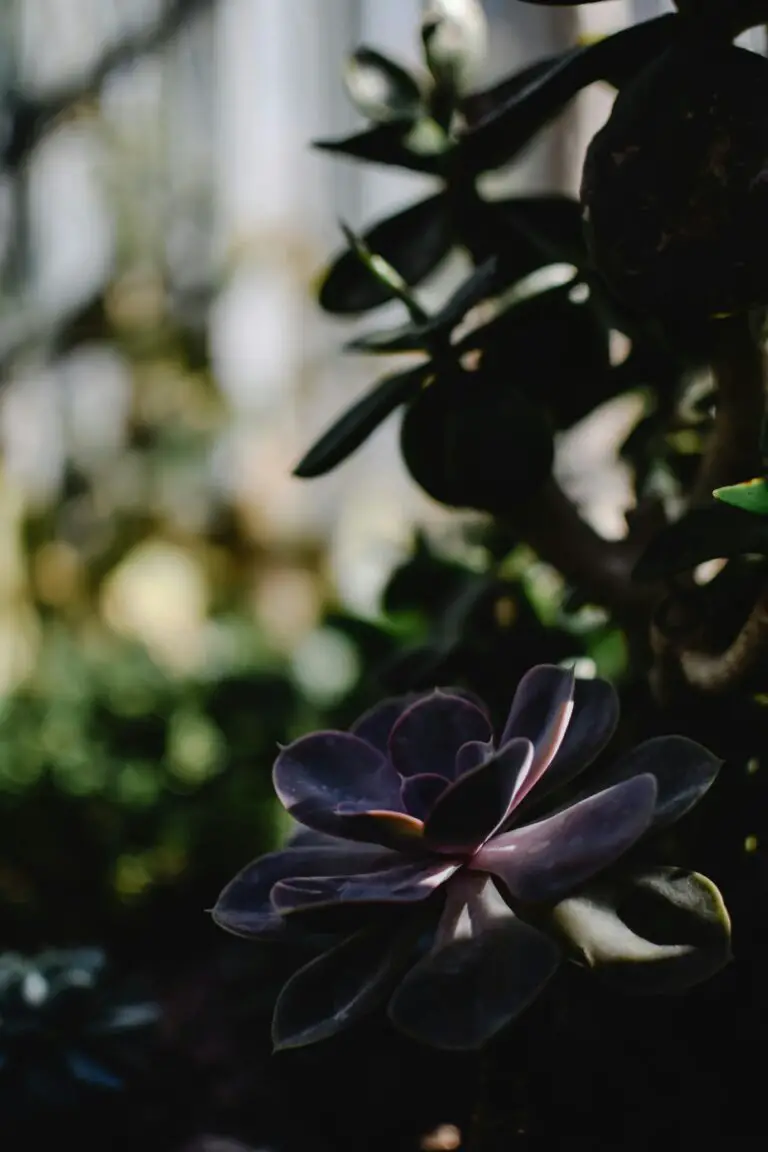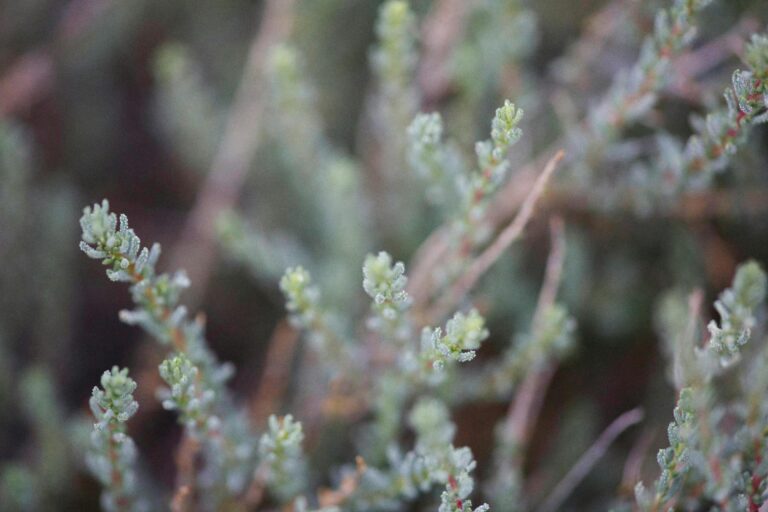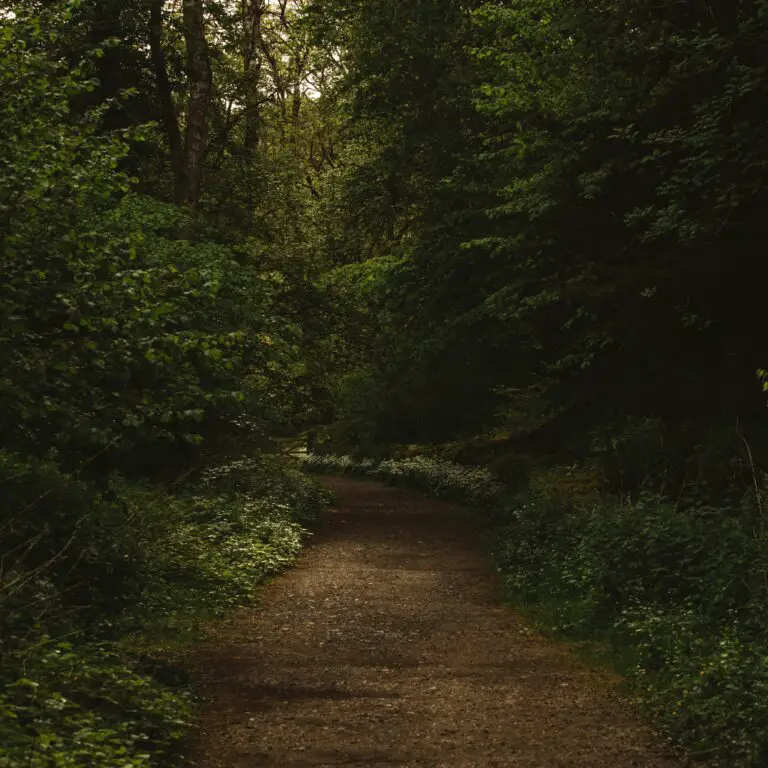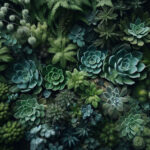Introduction to Sedum and Shade
When envisioning a garden, we often think of sunny spots where flowers beam bright and vibrant. But what about those shadier nooks that often get left behind? Enter sedum, a versatile and tenacious plant that brings a spark of life to places where the sun is a bit shy to shine. Known for their resilience and drought tolerance, these succulent beauties are changing the game for shaded garden areas.
Imagine the corners of your backyard that are graced with the cool respite of shadow more often than not. Perhaps you’ve considered them a lost cause when it comes to gardening? Well, it’s time to reshape that thought! Sedums, with their plump foliage and star-shaped blooms, might just be the missing piece. Their secret power lies in their adaptability. While they indeed revel in sunlight, many sedum species can quite comfortably settle into a life lived in dappled light or partial shade.

Take for instance the tranquil image of a sedum groundcover sweeping gracefully beneath a canopy of oak trees. Or imagine a rustic stone pathway lined with these hardy succulents, creating a lush green framework that thrives despite the sun playing hide and seek. This is the beauty of sedums—they embody versatility and bring an enchanting presence to every shaded corner of your garden.
Gone are the days when shade meant a compromise on colour and diversity. With sedums, you’re not only embracing the shade but celebrating it! For more insights into effectively caring for these and other versatile plants in your garden, check out our guide on Cultivating Success in Your Garden.
As gardeners enjoy the beautiful resilience of sedum, it’s important to choose the right species and understand the nuances of shade they favor. Not all sedums are created equal in the eyes of shadow, but with a little know-how, you can create a delightful patchwork of greenery that defies the traditional demands of sunlight.
Understanding Sedum Light Needs
Ever wondered if your shady garden nook might be a little too dim for the vibrant sedum? Picture this: A lush corner of your garden where sunlight plays hide and seek, dappled light dances through leaves, and just when it seems no plant could ever thrive there, a sedum plant bursts into life with its resilient beauty. Let’s dive into the world of these hardy succulents and explore just how much light they need to flourish.
Sedums, also playfully known as stonecrops, aren’t just one-size-fits-all plants. The sedum family has a variety that spans the color and texture spectrum, and yes, their light requirements vary just as widely. Most types of sedum are celebrated sun worshippers, basking in the glow for hours on end. But, and here’s the twist, not all sedum species demand a front-row seat to full daylight.
While some sedums might sulk in the shade, others, like the enchanting Sedum ternatum or the stalwart Sedum spathulifolium, have adapted to lower light conditions. These varieties can settle quite comfortably in your garden’s shaded spots, offering a ground-covering cloak of greenery that defies the darkness.
It’s important to match your sedum choice with your garden’s specific lighting scenario. Try imagining you’re choosing a roommate—would they love a sun-soaked living room, or are they more of a ‘curl up with a book in a cozy, dim corner’ type? For those areas where sunlight is a limited commodity, opt for shade-tolerant sedums to ensure they thrive.
Need more guidance on choosing the right species or wondering where these stonecrop favorites typically unfurl their foliage? Have a peek at our succulent care guide for insights into creating the perfect conditions for your sedum’s success. Put simply, if you do your homework on their light-loving or shade-seeking nature, you’ll set the stage for a showstopping sedum performance right in your own garden.
Exploring Shade-Tolerant Sedum Species
If you’ve been pondering whether your shaded garden nooks could host a collection of sedum plants, you’re in luck! Sedum species, widely adored for their hardiness and sculptural beauty, harbor a secret – some of them are remarkably adept at gracing the shadowy parts of your garden with their presence.
Let’s unfold the mystery of these shade-tolerant sedum varieties. Picture a sedum, often envisioned sunbathing in the brightest spot of the garden, now thriving beneath a canopy of leaves, their fleshy, succulent leaves unfurling with a sense of contentment. Despite their preference for sun, certain sedum types such as Sedum ternatum and Sedum flexuosum have evolved to embrace the dappling shade.

Imagine wandering through a shaded garden and stumbling upon the lush, ground-covering Sedum ternatum, commonly known as the woodland stonecrop. It’s an enigma; how does it flourish where sunlight is but a rare visitor? The answer lies in its adaptable nature; seeking out pockets of light, and soaking up the ambient moisture that shade often provides, it forms a vibrant tapestry of green.
Now, take the case of the illustrious Sedum flexuosum, a real-life example of resilience and adaptability. Its common name, ‘Blue Spruce Stonecrop’, hints at its bluish-green, needle-like foliage which creates a striking contrast against the muted tones of shadowed soil. It’s not just its appearance that’s adaptable; its growth pattern readily conforms to the limited light conditions, maintaining its allure without languishing for sunshine.
Intrigued by the concept of shade-loving plants? You might find this assortment of foliage plants for shady spaces to be quite inspiring. From the voluptuous fronds of ferns to the bold textures offered by hostas, each plant has its own unique way of brightening those dimmer spots in your garden.
These shade-tolerant sedum species are not just survivors; they’re proof that your garden’s shaded corners don’t need to be barren. With their distinctive characteristics and stunning aesthetics, they proudly proclaim that even in the penumbra, life flourishes in diverse and wondrous forms. So, yes, sedums can and will grow in shade — delighting in the cool retreat as much as they relish the sunshine.
Caring for Sedum in Shaded Gardens
Gardeners often ask, “Can the hardy sedum, known for its sun-loving ways, adapt to the cooler, dimmer corners of my garden?” You bet it can! With a little know-how, these resilient plants can surprise you by bringing life and color to those shady spots that other plants shy away from. Let’s dive into the essentials to keep your sedum content without the full kiss of the sun.
Soil Matters: A Foundation for Success
Picture this: You’re at a garden party, and you overhear “sedum” and “soil preference” in the same breath. You saunter over, ready to contribute your two cents. Sedum doesn’t demand the limelight; it asks for well-draining soil. That’s right, just like that charming person who’s comfortable in any group, sedum mingles well in sandy or gravelly soil that lets it strut its stuff without getting waterlogged boots.
Watering Wisdom: Keeping Roots Happy
Imagine a sedum plant, rooted in a less sun-kissed part of your garden—it’s like a guest at a shadowy table during a sunny BBQ. It’s there, it’s enjoying the ambiance, but it doesn’t want to drown its sorrows in a deluge. That’s your cue to water sparingly, ensuring the soil dries out between watering. It’s the botanical equivalent of offering a refreshing drink, not a swimming pool.
Fertilization: A Gentle Nudge for Growth
Occasional fertilization can provide that little extra push, much like a supportive friend that encourages you to try that funky dance move at the party. A low-balanced, slow-release fertilizer will do just the trick, giving your sedum the boost it needs without overwhelming it with excess nutrients.
Curious about more shade-loving varieties? Check out what other sedums thrive in the shadows as you decide which to invite to your garden party. Remember, every plant has its preferences and peculiarities, and with the right care, your shaded garden nooks can become a lush, green haven that even the most sun-seeking sedums can call home.
Designing with Sedum in Shady Spots
Imagine a lush, velvety carpet of green thriving in that cool, shaded corner of your garden where sunlight shyly whispers rather than shouts. Sedum, the versatile and hardy succulent, gracefully accepts the challenge of dimmer spots and transforms them into verdant vistas. It’s all about mixing and matching the right types of sedum to create a tableau that thrives in the hush of shade.
Consider the seductive charm of Sedum ternatum, with its cascading foliage, playing peekaboo among the larger leaves of hostas or ferns. Picture the rosy hues of Sedum spurium ‘Fuldaglut’ adding a blush to the shadows. These sedum varieties don’t just grow in shade; they rise to the occasion, complementing their sun-loving cousins by offering ground coverage and texture beneath the taller canopy plants.

For those keen to ramp up the aesthetic appeal, why not explore the concept of a “moon garden” where white-flowering sedum species, such as Sedum album, gleam in the twilight like a constellation on the ground? Nightfall becomes a stage for these pale blooms that seem to dance under lunar glow, imparting your garden with an ethereal beauty.
Envision a sedum-edged pathway winding through your woodland garden, each step a new delight to the eyes. This is not a mere daydream; it’s a practical and visually captivating solution for those less sunny locales. To gather more inspired planting ideas that will allow you to fully leverage the beauty of sedum, be sure to visit this comprehensive guide on incorporating sedum into your landscaping.
Introducing sedum to the shadier nooks doesn’t require a green thumb sorcery. It asks for an artist’s eye and a willingness to blend textures and shades. Do you have a sloped area that’s begging for attention? Let the low-growing Sedum reflexum cascade down like a living waterfall, its blue-green leaves a cool contrast to the darker, shaded backdrop.
Ultimately, sedum in the shade is a story of triumph, a testament to the resilience and adaptability of this diverse botanical family. It’s a tale of hidden nooks coming alive with whispering sedum leaves and hushed blooms—the unsung heroes in your garden’s symphony. So go ahead, welcome sedum into your shade, and watch as it weaves its quiet magic throughout your outdoor sanctuary.
Challenges and Solutions for Growing Sedum in Shade
So, you’re eyeing that shady spot in your garden and thinking, “Can my sedum really make it there?” Sedum, often hailed for its sun-loving succulence, does indeed face a few hurdles when we tuck them into those less-lit nooks. Let’s shed some light on the common problems and, more importantly, how you can illuminate the path to success for sedum in shaded areas.
Turning the Light On
Firstly, sedum seekers, be mindful that not all shaded spots are created equal. Dense shade might as well be the kiss of doom, but dappled shade can be sedum’s best friend. A real-life example? Imagine the gentle light that flickers through the leaves of a tall, breezy tree—that’s the kind of ‘sunscreened’ environment where some sedum types can genuinely flourish without getting sunburned!
Moisture Mishaps
Beware the soggy soils, dear gardener! Sedum’s roots despise a prolonged soak. In shade, where evaporation is slower, this becomes a real concern. To avoid water-logged woes, amend your soil with plenty of grit or sand—think of it like adding rice to the saltshaker to keep the salt flowing. This small step means your sedum’s roots will stay high and dry, even when the skies are gray and the air is damp.
Nourishment Know-How
Now, about nutrients—shaded sedum won’t gobble up as much food as their sunbathing cousins. This doesn’t mean you should ignore feeding them; it’s about finding that ‘just-right’ portion, like Goldilocks and her porridge. A light top-dressing with compost in the spring should do the trick, giving them a gentle boost without going overboard.
Including a video here can also be very beneficial to visualize the process of sedum cultivation, even in shade. Why not take a moment to watch a video that talks about easy, low maintenance perennials, including our beloved sedum?
Shade-Specific Species Selection
Lastly, not all sedum are shade-shy. Varieties like Sedum ternatum and Sedum sieboldii can handle the shadows much better than others. It’s like casting the right actor for a movie role—pick the sedum that loves a good shade scene, and you’ll be on your way to a blockbuster garden performance.
Remember, while sedum may prefer a sunny plot, with a bit of ingenuity and the right conditions, even shaded gardens can boast the rubbery, resilient beauty of these succulent jewels. Every shade corner can become a potential stage for sedum’s charm—with smart strategies, of course!
The Versatility of Sedum in Diverse Light Conditions
When it comes to planting in shady areas of your garden, you might wonder, “Will sedum grow in shade?” The answer is a resounding yes! Sedum, a genus of succulent plants, is often celebrated for its hardiness and ability to thrive in various light conditions, even those shady nooks where other plants may struggle.
Imagine you’ve got a corner of your garden that never seems to catch the full light of day. It’s easy to think this spot is destined to remain bare or become the home of only the most unremarkable of shade-dwellers. But here’s where sedum shines—literally. It’s not just a plant for the sun-kissed parts of your yard; it has an almost magical adaptability that allows it to prosper in the dappled light or even full shade.
Consider the Sedum hispanicum, sometimes known as Spanish stonecrop, a variety that forms a carpet of blue-gray to purple leaves and is as happy in shade as it is in sun. In a suburban backyard, where towering trees cast long shadows, sedum can offer a ground cover solution that’s both beautiful and fuss-free. Instead of battling to keep the grass alive, homeowners can plant sedum and watch as it fills the space with texture and color, proving that shade need not spell the end of your gardening dreams.
Take a stroll through a well-tended public garden, and you’re likely to see how landscape architects leverage sedum’s flexibility. It’s not uncommon to find it nestled beneath trees, in rockeries that get sporadic light, or even in vertical gardens on shaded walls. The lesson here is that sedum isn’t just for the sunny spots; it’s for every corner, every clime, and every gardener who seeks to create an oasis of green, no matter the light level.
So next time you gaze out at your shady garden nook and ponder what could possibly grow there, think sedum. With its low maintenance needs, drought tolerance, and its outspoken defiance of the shady limits set by other less adaptable plants, it’s more than just a possibility—it’s the perfect choice.
Frequently Asked Questions
Are you tiptoeing around the idea of planting sedum but worry your shaded garden might not be the sunny spot these succulents are known for loving? Let’s shine some light on the common curiosities gardeners have about sedum and shaded areas.
Can Sedum Survive Away from the Sun’s Embrace?
It’s a sunny day myth that all succulents require a relentless blaze of sunlight. Certain sedum species are actually quite accommodating to lower light conditions, making them a versatile choice even for those dappled light corners of your garden. Native stories of gardeners speak to the robust nature of sedum, with varieties such as Sedum ternatum, often referred to as woodland stonecrop, thriving beneath the canopy of trees.
Will My Shade-Tolerant Sedum Still Bloom?
Let’s not leave this question in the dark—yes, many shade-tolerant sedums will still grace you with blooms. Although they may not be as prolific as their sun-bathed counterparts, a well-chosen sedum can provide a subtle splash of color even in the serene shadows of your garden nooks.
How Does Sedum Behave Differently in Shade Versus Sun?
Think of sedum as the adaptable friend who can fit in anywhere at the party. In sunny spots, it spreads its arms wide, basking gloriously in the warmth, while in shaded retreats, it grows more demurely, often with lusher foliage. There’s a real charm to these shade-grown sedums; their presence is like a well-kept secret amongst the ferns and mosses.
Are There Any Special Considerations for Shaded Sedum Care?
Shade doesn’t mean out of sight, out of mind. Your shaded sedum still craves attention and care. Adequate drainage is critical, as water tends to linger in shady areas. Clever gardeners often incorporate organic matter to bolster drainage and mimic the woodland floors that some sedum species adore. It’s all about recreating the natural habitat where these plants have learned to flourish.
Now, let’s guide you through the shaded pathways of sedum gardening with this informative video:
Embarking on your shade-filled sedum journey doesn’t have to be a shot in the dark. Armed with the right knowledge and species, you might just discover that your garden’s shaded areas are a hidden sanctuary for these resilient plants.

